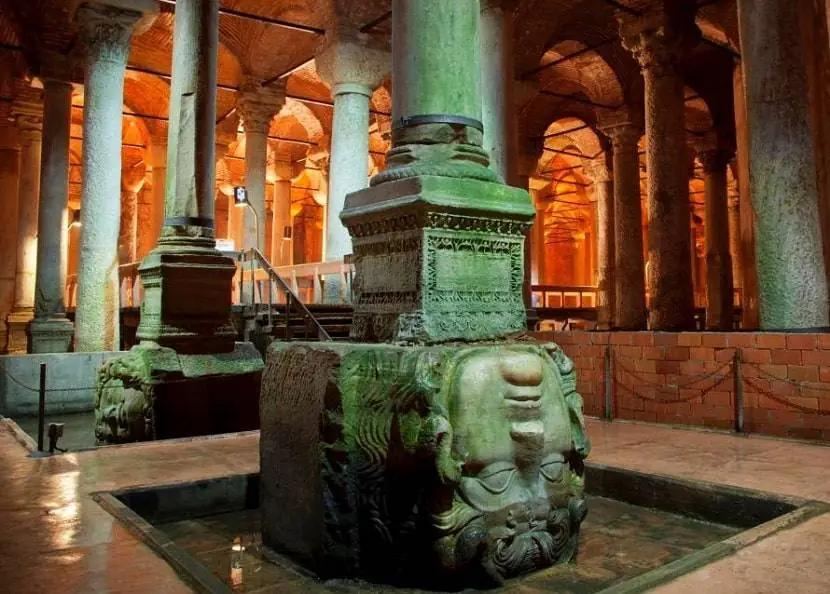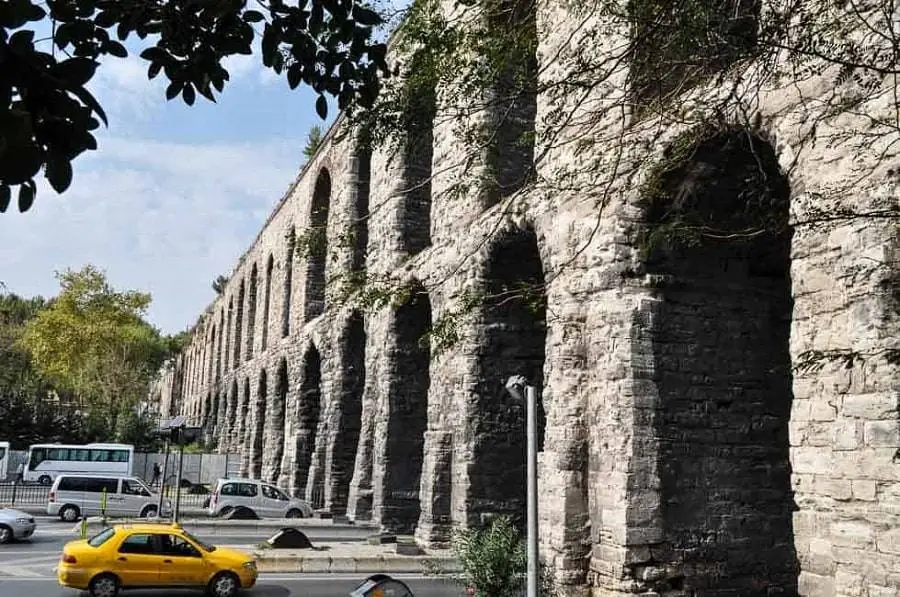Emperor Justinian authorized and erected this subterranean construction in 532. Basilica Cistern Istanbul was built with 336 columns, many of which were rescued from wrecked temples and include finely carved capitals, and is Istanbul’s largest remaining Byzantine cistern. Its symmetry and sheer grandeur of design are awe-inspiring, and its unfathomable depths provide a welcome respite on hot summer days.
The Basilica Cistern History
The Basilica Cistern, like most places in Istanbul, has an intriguing history. Because it located beneath the Stoa Basilica, one of the great squares on the first hill, it was formerly known as the Basilica Cistern. It was built to supply the Great Palace and its surrounding structures with up to 80,000 cu metres of water carried over 20 kilometres of aqueducts from a reservoir near the Black Sea, but it was stopped when the Byzantine emperors moved out of the Great Palace.
Basilica Cistern Istanbul wasn’t uncovered until 1545, when researcher Petrus Gyllius was investigating Byzantine antiquities in the city and was told by locals that they could get water by lowering buckets into a dark abyss beneath their basement flooring. Some even caught fish in this manner. Gyllius became intrigued and began exploring the neighborhood, eventually finding the cistern in one of the basements. Even after his discovery, the Ottomans (who dubbed the cistern Yerebatan Saray) did not treat the so-called Underground Palace with the respect it deserved, and it became a receptacle for all kinds of garbage, including corpses.
The Istanbul Metropolitan Municipality cleaned and renovated the cistern in 1985, and it reopened to the public in 1987. It is now one of the most visited tourist sites in the city. You’ll sense water pouring from the vaulted ceiling and watch schools of ghostly carp patrolling the water as you walk along its raised wooden platforms — it’s got a lot of atmosphere.
The Basilica Cistern Facts
- Basilica Cistern is well-known for its two distinct Medusa Heads.
- In the 6th century, Emperor Justinianus I of Byzantium had an underground water reservoir created for him (532).
- The cistern, which is 140 metres long and 70 metres wide, covers a massive rectangular area of 9,800 m2 and can hold 100,000 tons of water.
- The term “Basilica” stems from a previous religious construction on the same place as the cistern.
- The cistern is reached through a 52-step stairway and houses 336 columns, each of which stands 9 metres tall and is spaced 4, 8 metres apart.
♦ 7 Days Turkey Tour Package – Western Turkey Tour
What the Basilica Cistern Offers
The cistern is a very quiet and tranquil spot, with spectacular arches and columns. The columns, which include the fabled Medusa Heads, were assembled from old structures and carved from various types of marbles.
The Medusa Heads

The two Medusa Heads that are employed as supports under the two columns at the cistern’s northwest side, are the most interesting and draw the most visitors. It’s also unknown how those Medusa Heads ended up in the cistern. As a result, there have been several myths surrounding the Medusa heads.
The most well-known is that Medusa was one of the most gorgeous girls in ancient times, with dark eyes, long hair, and a stunning figure. Perseus, Zeus’s semi-god son, has captured her heart.
On the other side, envious Athena was in love with Perseus, so she cursed Medusa and turned her hair into snakes, removing her beauty. Her gaze began to gorgonize the males who were staring at her. Following that, Perseus pursued Medusa and used her power to defeat the enemy.
Medusa was one of the three Gorgonas (female underworld monsters in Greek mythology) with snake-heads, according to another legend. She has the ability to gorgonize those who look at her. As a result, the Medusa Head was placed in the cistern for protection.
How to Get to the Cistern?

The Basilica Cistern is situated in Sultanahmet, Istanbul’s most popular tourist zone. As a result, getting to the museum is a breeze. The cistern is accessible by foot from notable monuments like as Hagia Sophia and the Blue Mosque.
To go to the Cistern from Taksim Square, you must first take Funicular F1 to Kabatas. You may get to Sultanahmet Tram Station in 15 minutes if you take Tram T1 from Kabatas Tram Station. The walk from Sultanahmet Tram Station to the cistern takes only a few minutes. The Theodosius Cistern, a Byzantine cistern that now serves as a museum, is also close by. From the same tram stop, you can walk there.
Famous Movies Filmed in the Cistern
In Basilica Cistern Istanbul, memorable sequences from a number of well-known films were filmed. From Russia With Love, featuring Sean Connery, was the first production to film the Cistern in 1963. At the Basilica Cistern, the final sequence of the film Inferno, based on Dan Brown’s novel, was also shot. This film, which was shot in 2016, starred the well-known actor Tom Hanks in the lead role.

